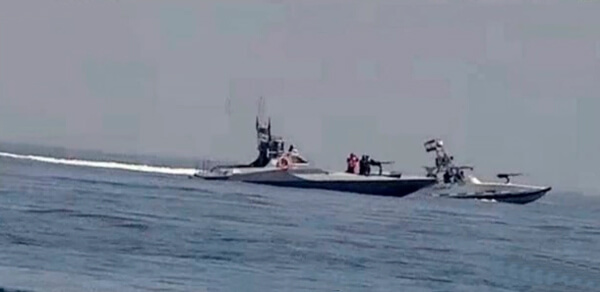U.S. 5th Fleet Integrates Unmanned Platforms to Increase Surveillance Ops

The U.S. Naval Forces Central Command headquartered in Bahrain is highlighting its efforts at integrating unmanned platforms into the traditionally crewed ships and aircraft in the U.S. 5th Fleet. Unmanned underwater vehicles (UUVs), unmanned surface vehicles (USVs), and unmanned aerial vehicles (UAVs) were involved in the operation.
“We have been operating UAVs and UUVs in the region for years,” said Capt. Joe Baggett, Director of Maritime Operations for U.S. Naval Forces Central Command and U.S. 5th Fleet. “Adding our new USVs, and then integrating all of these platforms into fleet operations, is how we expect to fly and sail well into the future.”
The U.S. along with its allies have been working to counter increased Iranian aggression in the region. The U.S. and British both highlighted earlier this year that they were increasing their efforts including patrols in and around the Strait of Hormuz to deter Iranian efforts harassing and threatening international shipping.
According to CentCom, last month, naval forces in the Middle East region successfully took the next step in integrating unmanned platforms as part of their efforts to conduct enhanced maritime security operations in the waters surrounding the Arabian Peninsula.

Iranian speed boats monitored with the unmanned platforms (US Navy undated photo)
Seven task forces falling under the U.S. 5th Fleet integrated 12 different unmanned platforms with manned ships for “manned-unmanned teaming” operations, tracking Iranian Navy and Islamic Revolutionary Guard Corps Navy (IRGCN) ships and small boats over several days during routine patrols in and around the Strait of Hormuz.
“The integration of new, multidomain unmanned platforms into routine fleet operations provides more ‘eyes on the water,’ enhancing maritime domain awareness and increasing deterrence in the region,” said Vice Adm. Brad Cooper, Commander, U.S. Naval Forces Central Command and U.S. 5th Fleet.
Cooper added that collectively, these platforms support the safe navigation and free flow of commerce through vital regional chokepoints, particularly around the Strait of Hormuz.

Warship monitored from one of the unmanned aerial platforms (US Navy photo)

that matters most
Get the latest maritime news delivered to your inbox daily.
U.S. Naval Forces Central Command/U.S. 5th Fleet’s area of operations encompasses about 2.5 million square miles of water area and includes the Arabian Gulf, Red Sea, Gulf of Oman, Gulf of Aden, Arabian Sea, and parts of the Indian Ocean. This expanse, comprising 21 nations, includes three critical choke points at the Strait of Hormuz, the Suez Canal, and the Strait of Bab al Mandeb.
